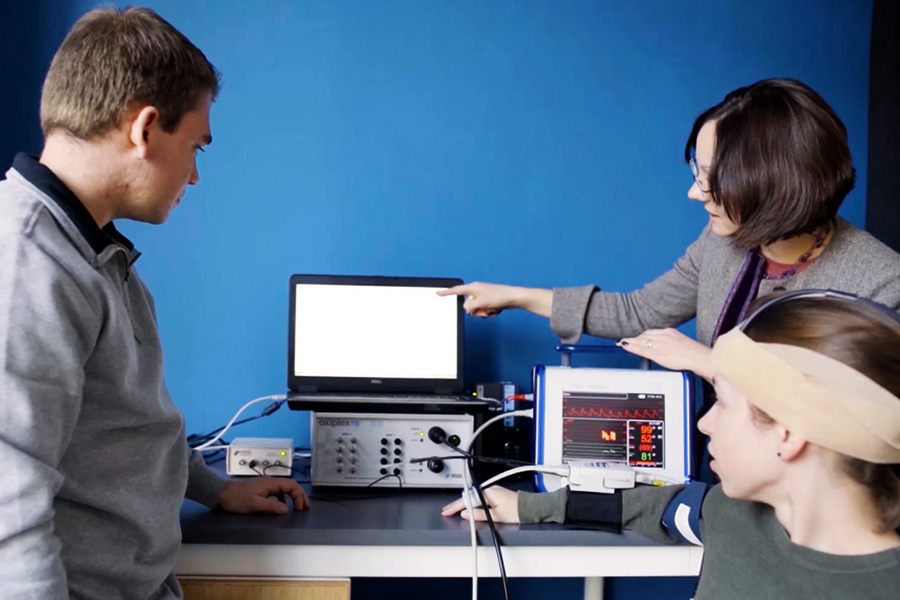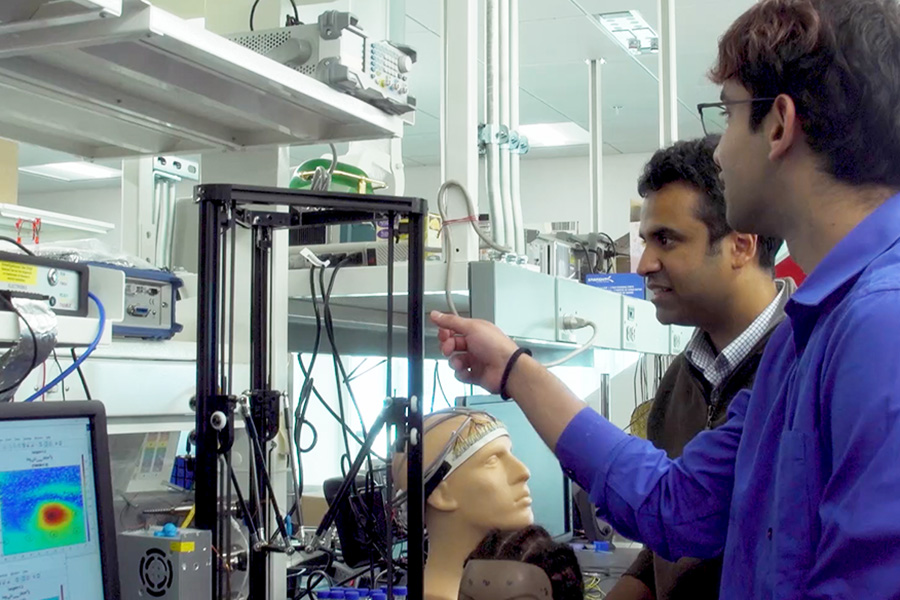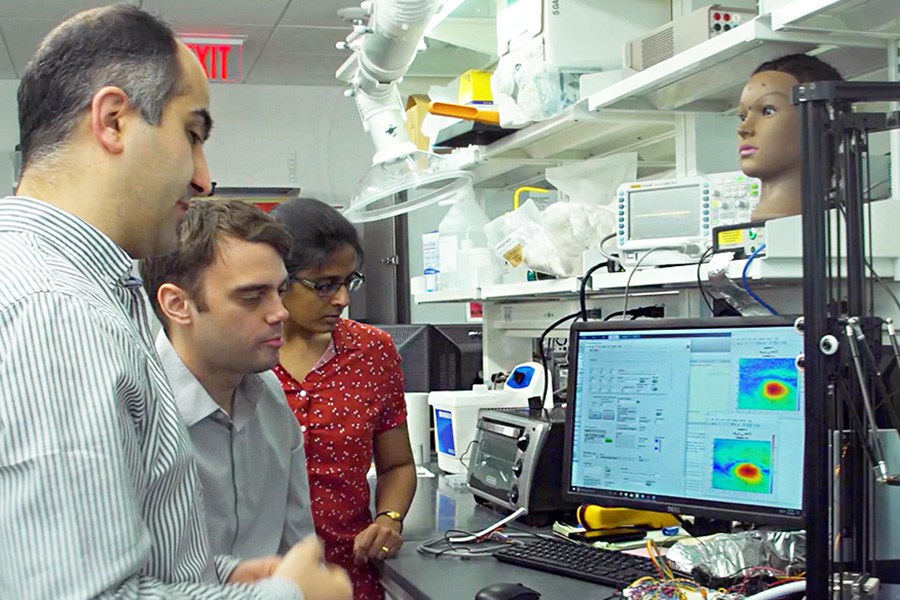Team Receives $19 Million from DARPA To Create Noninvasive Brain Interface
By Emily Durham
Media Inquiries- College of Engineering
A team of researchers from Carnegie Mellon University has received a $19.48 million grant from the Defense Advanced Research Projects Agency (DARPA) to design a noninvasive neural interface that can be used as a wearable device. This neural interface will be capable of recording and stimulating the brain's dynamic activity with high temporal and spatial resolution.
This novel neural interface will enable unprecedented access to neural circuits to study brain function and dysfunction, as well as begin designing precise therapeutic interventions to treat neurodegenerative diseases such as epilepsy, Alzheimer's, and Parkinson's. It also can be used as a noninvasive platform for realizing next generation brain-machine interfaces.
DARPA's "next-generation-nonsurgical-neurotechnology" (N3) program aims to develop high-performance, bi-directional brain-machine interfaces. The team's interface is being developed by harnessing concepts in physics, biology, and engineering through electricity, ultrasound and light. The team of researchers is led by Associate Professor of Electrical and Computer Engineering (ECE) Pulkit Grover, along with Assistant Professor of ECE Maysam Chamanzar and Assistant Professor of Biomedical Engineering Jana Kainerstorfer.
"The perspective that our team adopted, which I think is quite novel, is that instead of fighting the physics that limit our ability to affect the brain noninvasively," Grover said. "We are harnessing the complexities of the physics and biology associated with this problem in order to improve the spatial and temporal resolution of measuring and stimulating the brain."
For years, Chamanzar, Grover and Kainerstorfer have been developing theories, technologies and instrumentations that allow them to sense and stimulate the brain, from diagnosing worsening traumatic brain injuries and concussions, to treating epilepsy and migraines.
"Existing methods to interface with the brain usually involve invasive surgical procedures to provide high precision for recording or modulating the neuronal activity," Chamanzar said. "On the other hand, noninvasive neural interfacing techniques that are applied from outside the scalp cannot provide the high temporal and spatial resolution. One of the most fundamental challenges of almost all existing noninvasive methods is the dispersion of electrical signals and optical or ultrasonic waves as they propagate through the brain tissue and get scattered."
Half of the project, led by Chamanzar, is aimed at sensing the brain function, noninvasively. For sensing at a higher accuracy, compared to existing noninvasive techniques, the team will use Chamanzar's concept of ultrasound-based light focusing to pinpoint light interaction in the brain. Using this enhanced focusing of light, the team then will use Kainerstorfer's near-infrared light sensing techniques to measure brain function. They aim to heighten the efficacy of both techniques and gain higher resolution readings, all while fitting the technology conveniently into a device worn on the scalp.
"What really excites me about this project is that we are ultimately trying to noninvasively help identify regions in the brain that are impacted by disease with a much higher resolution than previously possible," Kainerstorfer said. "This work has implications for better diagnosis or localization of epilepsy, traumatic brain injuries, stroke and other neurological diseases."
Another half of the project, led by Grover, is aimed at stimulating the brain.
"Noninvasive brain stimulation technologies have hardly changed in the last few decades," Grover said. "Our recent work shows how the nonlinearities of neurons - properties that make them hard to understand - can be harnessed to dramatically improve resolution of stimulation over state-of-the-art techniques."
By using Grover's current waveforms and electrode patch-designs, the team aims to provide targeted, localized treatments, without the need for surgical interventions. To accomplish this, the team will rely on the expertise of Chamanzar in designing neural interfaces, for stimulation and recording tailored for neural stimulation based on dynamics of neural activity.
"We will design an array of electrical stimulators in the form of a flexible, wearable device that can be placed over scalp, in order to generate a pattern of electrical signals in the brain tissue by counterbalancing the dispersive effects of brain tissue, scalp and skull," Chamanzar said.
The team also will leverage ECE Professor Gary Fedder's expertise in skin-compatible materials to realize this technology in the form of a wearable device, and the expertise of Biology Professors Alison Barth and Aryn Gittis in experimental validation.
"Our techniques will make precise neurostimulation treatments accessible to a much larger section of population, and readily tested and applied to a broader set of disorders," Grover said.
Other Carnegie Mellon University faculty on this project include the College of Engineering's Shawn Kelly and Bin He, as well as Mellon College of Science's Aryn Gittis and Alison Barth. Collaborating institutions include the University of Pittsburgh, where the work will be led by Douglas Weber and Robert Gaunt, Battelle Memorial Institute and the Air Force Research Lab.


